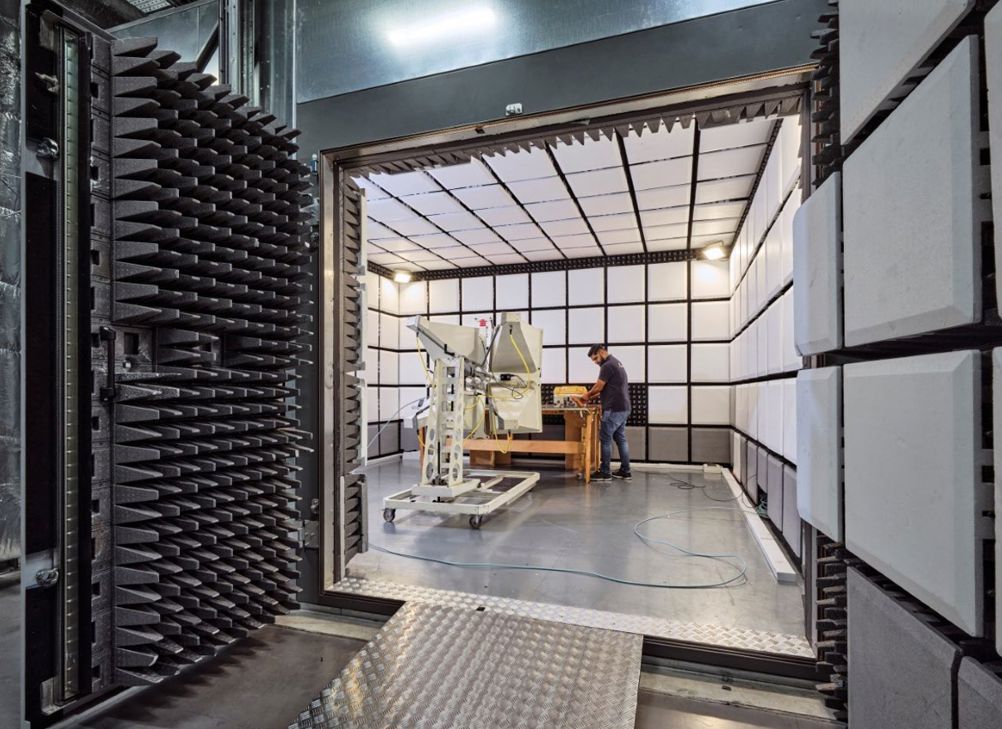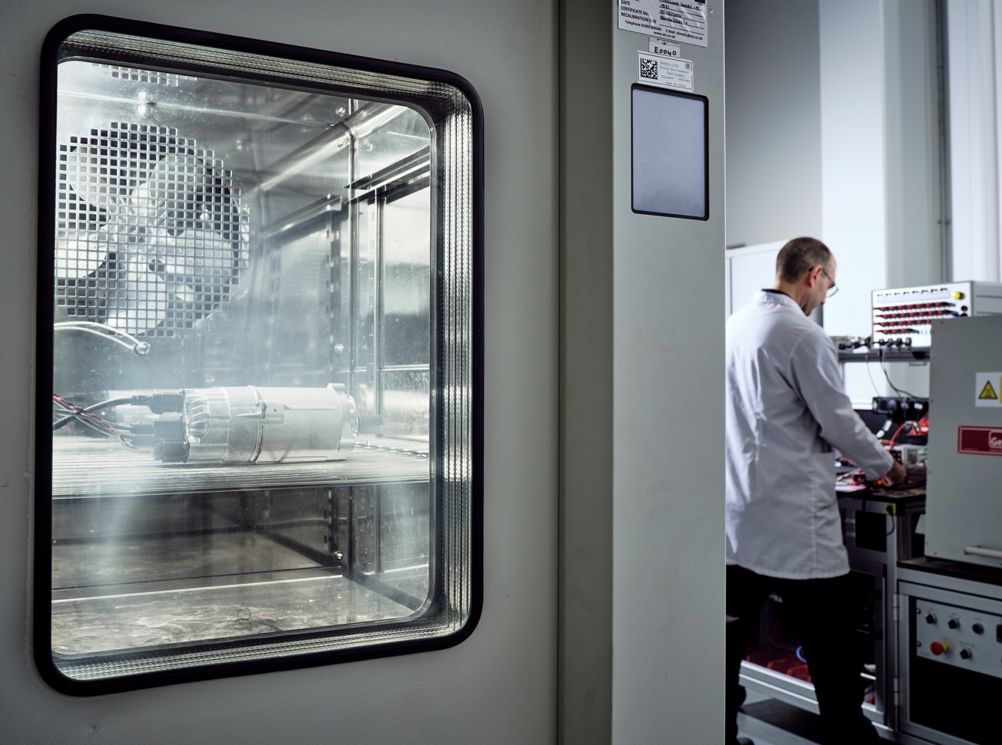The West Midlands has long been a focal point of the UK automotive industry. Britain’s first production car rolled out of the gates of a former cotton mill in Coventry in 1896. By that point Joseph Lucas & Son had already been established in neighbouring Birmingham for more than 30 years, where it had made its name in the production of bicycle lamps.
As the newfound world of motoring grew in the early 1900s, Lucas switched its focus to automotive electrical items, with dynamos and magnetos, later followed by starter motors and electric headlamps. The company soon moved to Solihull, and in time, it would go on to become Lucas Varity and then TRW, pioneering the development of electric power steering and radar-guided adaptive cruise control along the way.
What began life as Joseph Lucas’s bicycle lamp company is now part of ZF, but it’s still in Solihull, and it remains a major centre for innovation in automotive electronics.
The complexity of modern vehicles means that you have to start with an understanding of the whole-vehicle needs
Bal Panaser - global vice president for chassis electronics, ZF
ZF recently relocated to a new £70 million UK R&D hub on the outskirts of the town. The 220,000 sq ft site employs 750 personnel from 38 different countries, and it’s home to a number of ZF’s Global Centres of Competency including those for servo motor design and automotive cyber security. EMC testing is also a major focus, with six chambers on site – one of which can accommodate a complete aircraft engine – while the Hub is also home to a climatic test chamber large enough to take a railway carriage.
Much of the work at Solihull now falls under the far-reaching umbrella of future mobility. This includes the ramp up towards greater levels of automation, governed by ZF’s mantra of See, Think and Act.
“The complexity of modern vehicles means that you have to start with an understanding of the whole-vehicle needs,” explains Bal Panaser, global vice president for chassis electronics at ZF. “The ‘See’ element is how the vehicle perceives its environment through systems like radar and cameras, ‘Think’ is the enormous amount of processing that has to be done to make sense of that, and ‘Act’ is actuation, such as brakes and steering systems.”
Panaser takes a refreshingly pragmatic approach to the subject of automated driving. He acknowledges that some of the industry’s original predictions have proved wide of the mark, but also emphasises that modern passenger cars are already very much on a road towards autonomy.
“Electric power steering is a good example of this,” he comments. “A lot of the systems that we’re working on today are intended for conventional passenger cars. But they’re designed so they can be evolved into steer-by-wire systems that are suitable for partial autonomy, where the steering wheel is just one input. We’re starting to see that already with some of the Level 3 autonomous driving functions. And the same core concept can be evolved into systems for autonomous shuttles and similar applications that may very well not have a steering wheel at all.”

The sensing side of the equation has also become increasingly sophisticated. Radar is something of a speciality at the Solihull hub. Lucas Automotive – as it was back then – was one of the original pioneers of this technology, partnering with Jaguar on a project known as Prometheus (Programme for European Traffic of Highest Efficiency and Unprecedented Safety).
By 1992, the consortium had developed a microwave radar system to monitor the range to the vehicle in front, complete with throttle control to speed the car up and brake servo actuation to slow it down.
While the sensing range of these systems has gradually improved over the years, the step changes in their capability have largely come from other aspects of their design. For instance, the field of view in the early systems was less than 20 degrees, whereas modern automotive radar can cover a horizontal sweep of more than 150 degrees; the sensor resolution has improved dramatically; and it’s now commonplace to have multiple radar systems on one vehicle, along with ‘sensor fusion’ where the inputs from different sensor technologies, such as cameras and radar, are combined.
“Sensor resolution is perhaps the single biggest area of improvement that we’ve seen in radar over the years,” comments Panaser. “You need to link the radar with other systems on the vehicle to gain the overall confidence you need to make more complex decisions based on those inputs.”
Much like the sensors themselves, it’s the fusion of different autonomous capabilities that’s drawing vehicles progressively into higher levels of automation.
“A lot of the fundamental technology is available today or will be imminently,” comments Panaser. “The complexity really comes from validating that for all scenarios, and that’s where simulation comes in, with the ability to run millions of miles of virtual driving in addition to real-world testing. That’s still a huge challenge. possibly
Achieving the required level of functionality is the standout challenge for these systems, but functional safety is also a significant concern. For instance, a CAN bus module designed for a commercial appliance might function perfectly well while everything is working as it should, but that doesn’t necessarily mean it’s robust enough to be used in a safety-critical application.
“Availability is a critical trend in the industry,” comments Panaser. “It’s all about the ability to fail in an operational manner. For instance, in the past, you might have defined the ability to stop the whole system within a certain timeframe as an acceptable failure mode if there was, say, a fault in an element of the control system. Today that would be totally unacceptable – you need to provide an adequate degree of functionality, even under a failure mode.”
The automotive industry has its own standards and methodologies surrounding this topic, but much of it has been inspired by aerospace. As with flight control systems on aircraft, ZF’s electronics relies heavily on redundancy – providing a second ‘lane’ of control if the first was to fail.

“If you work to the design standards of ISO 26262, and various ASIL levels, they inevitably drive you towards building in a degree of redundancy, and the diagnostic capabilities to determine what’s happening if you have a failure,” notes Panaser. “And those safety levels aren’t something you can determine retrospectively with validation alone. You need to be able to prove that the development process has been carried out with the right safety architecture in place from the beginning.”
These diagnostic capabilities are key. After all, switching to a backup function only works if you can be sure that the error originated in the area that you’re bypassing. As a result, a lot of attention is paid to eliminating so-called common cause failure modes that could disable multiple parts of the system – basic examples might be the possibility of water ingress to a control unit or over-reliance on a single sensor.
It’s this methodical approach that Panaser believes will help to lay down the foundations for greater levels of autonomy in the future. That’s an area in which ZF’s Solihull hub will be heavily involved – continuing a tradition that stretches back well over a century.











Guest blog: exploring opportunities for hydrogen combustion engines
"We wouldn't need to pillage the environment for the rare metals for batteries, magnets, or catalisers". Batteries don't use rare...